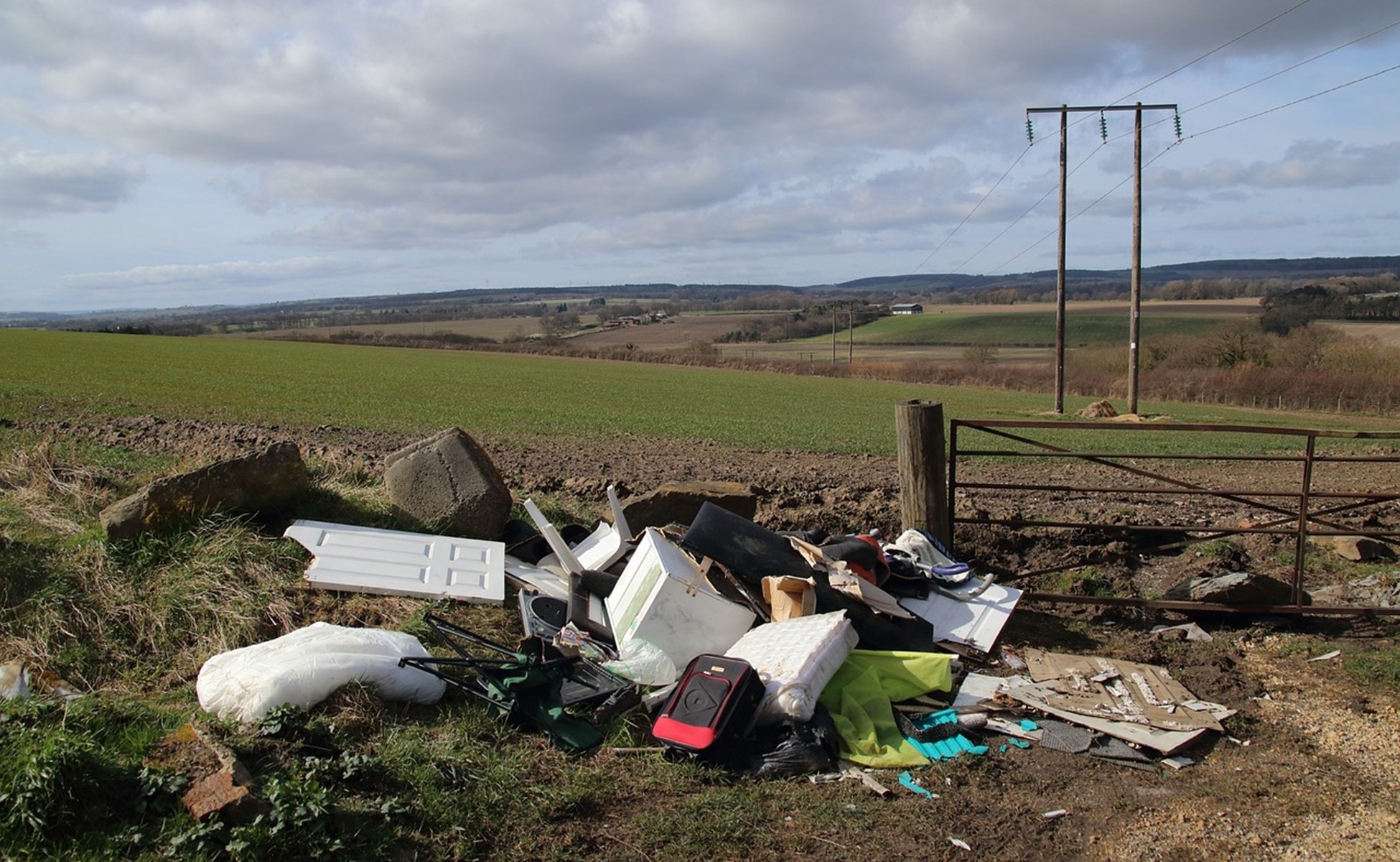Illegal waste dumping, also known in some regions as fly-tipping, is something that affects all of us. Not only is it deeply harmful to the health and aesthetics of our local environment, but it also hurts our wallets, since clean-up usually either falls on the shoulders of municipalities when trash is left in public areas, or the landowners themselves if dumped on private property.
Unfortunately, wrong-doers are difficult to catch. All they need is a secluded corner, away from any cameras, and as long as they don’t leave any traces of personally identifiable information among the trash, they’re off scot-free.
In what follows, we’ll take a look at some numbers and statistics of the illegal dumping situation in the UK, identify the main challenges, and explore how some municipalities are fighting fly-tippers with new technologies.
A lose-lose scenario: illegal waste dumping in the UK
In 2019/2020, the UK recorded nearly a million cases of fly-tipping, with people most commonly leaving their trash near highways and nearly 2/3rds of incidents involving household waste. The yearly cost of cleaning up illegal waste exceeds GBP 85 million.

The price to pay is deeply asymmetrical as costs are massive, but only a fraction are recuperated through fines, given how difficult it is to catch fly-tippers. In 2019/2020, 474,000 enforcement actions were carried out, which included over 75,000 fixed penalty notices and nearly 3,000 prosecutions.
Of the prosecutions, even with a high rate of convictions (98.8%), only GBP 1,170,000 was collected in fines, which not only fails to dent the total costs, it doesn’t even offset the cost of prosecution actions themselves, which totaled GBP 1,171,000 for the same time period. Even the total of 75,400 fixed penalty notices (up to GBP 400 fine) issued fall very short of the price paid for clean-up.
Plus, while it’s easy to get caught up in numbers and abstractions, the deleterious short- and long-term effects on the environment are immeasurable, as chemicals can contaminate the land and waste can harm local wildlife.
Of course, it’s not just the UK. Illegal waste dumping is a pervasive problem all over Europe and the world.
What can be done about it?
Current challenges: lack of flexibility
For most countries, preventing illegal dumping revolves around catching and deterring wrong-doers.
However, offenders choose remote locations that cannot be easily monitored, including places like city outskirts, abandoned territories, and forests. These places have little-to-no infrastructure and hence are unlikely to support any surveillance technologies, providing wrong-doers with the anonymity they seek.
While infrastructure can be installed to, for example, support cameras and combat waste dumping in locations where it’s an on-going problem, waste dumpers can easily go somewhere else, once aware of the possibility of being caught. As such, investment in infrastructure development is typically reserved for acute situations, as it mainly serves to deter people from dumping in that specific area, rather than stops them from doing it completely.
A modern solution: remote video surveillance
For this reason, a growing number of municipalities, e.g. Latvian and Belgian ones, are turning to mobile video surveillance systems, such as STROPS AVS. Battery-powered cameras can be deployed far more efficiently than their typical fixed CCTV counterparts and require virtually no infrastructure.
This is by no means a golden bullet solution to illegal waste dumping, however, mobile video surveillance systems can ensure unprecedented agility for local authorities in adapting to the movements of fly-tippers, as the cameras can be easily moved around from location to location. In fact, municipalities save months of work, speeding up their processes up to 36x thanks to faster deployment and less hassle with project management and permits.
This allows to cut total costs up to 4x and makes video surveillance a viable and cost-effective solution for catching wrong-doers. Plus, the use of mobile cameras can serve as a deterrent, since a camera can now be placed virtually anywhere, even in the middle of a forest, which can make waste dumpers question their anonymity no matter the location.
Conclusion
While mobile surveillance systems are becoming an essential tool for combatting fly-tipping, they cannot catch everyone, which means that much of the responsibility for keeping their surroundings clean lies on the shoulders of the communities. Education, community initiatives, and individual reporting will continue to be essential for stopping people from even entertaining fly-tipping as a potential option.
But for those who are uninspired by the carrot, the stick is called for. And with remote video surveillance authorities now have a better tool to hold more people accountable for their criminal actions.
